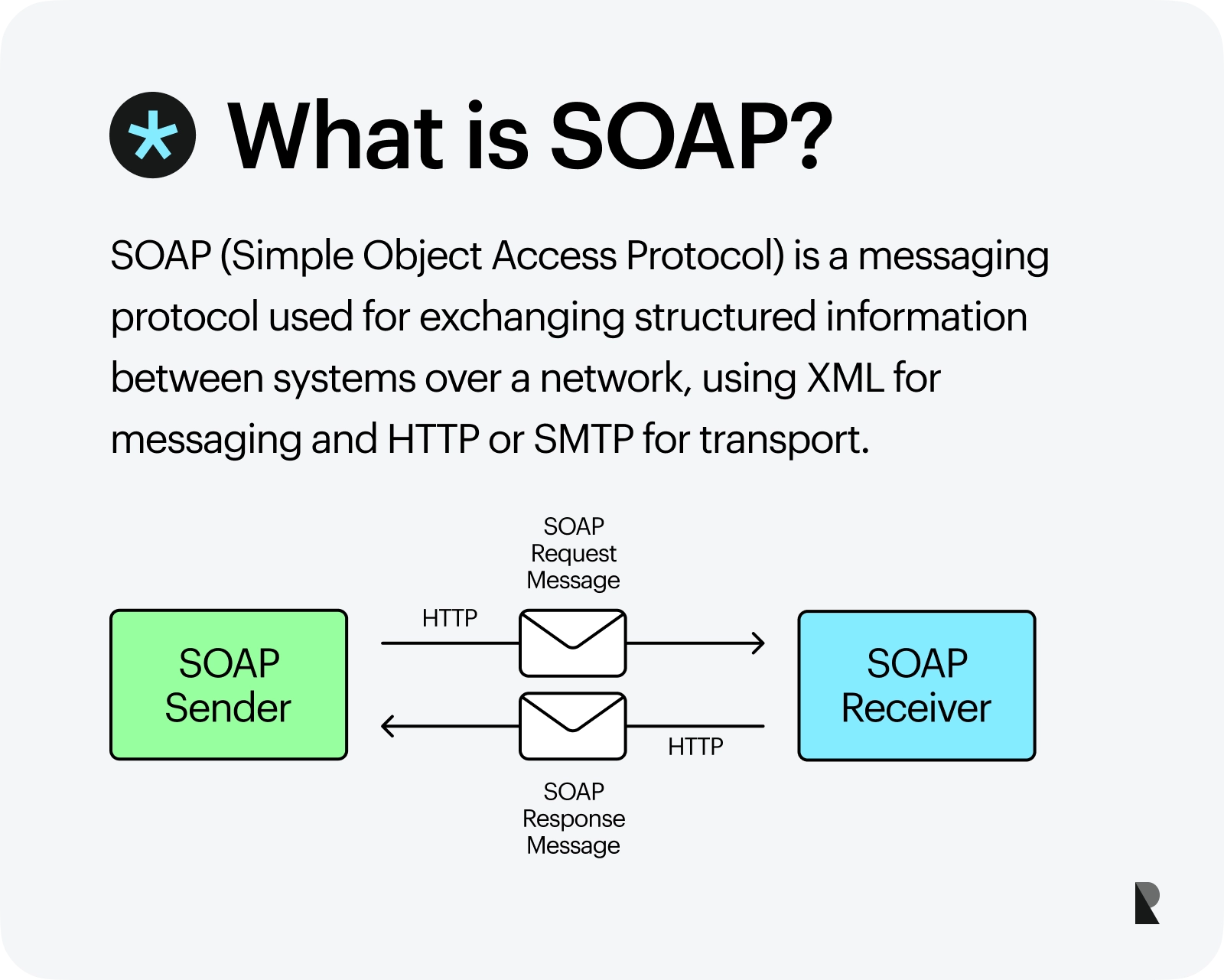In the era of REST APIs, microservices, and serverless architecture, it’s easy to think of SOAP (Simple Object Access Protocol) as outdated. But here’s the truth: SOAP web services remain a critical backbone in many enterprise applications, powering secure, structured, and reliable communication across platforms.
From banking systems to logistics networks, SOAP helps bridge legacy infrastructure with modern operations. I’ve worked with clients where REST simply wouldn’t cut it—SOAP was the only solution robust and compliant enough for the job.
Let’s explore why SOAP web services still matter, especially when interoperability is non-negotiable.
🧠 What Are SOAP Web Services?

SOAP is a protocol for exchanging structured information in web services using XML (eXtensible Markup Language). It operates over various transport protocols—typically HTTP or HTTPS—and ensures that messages follow a strict schema.
Unlike REST, which uses lightweight, flexible data formats like JSON, SOAP is formal, standardized, and highly extensible, which makes it ideal for scenarios where structure and validation are essential.
Core Components of SOAP:
-
Envelope – Defines the start and end of the message
-
Header – Contains metadata (like authentication or routing info)
-
Body – Carries the actual data or request
-
Fault – Handles errors in a structured way
🔄 Why SOAP Still Matters for Interoperability
When integrating multiple systems—especially those developed by different vendors or running on different tech stacks—interoperability is everything. SOAP is built for that.
Benefits of SOAP Web Services:
| Feature | Why It Matters |
|---|---|
| ✅ Platform independence | SOAP works across Windows, Linux, Java, .NET, etc. |
| ✅ Strict standards | Makes integration predictable and secure |
| ✅ Built-in error handling | Fault messages make debugging easier |
| ✅ Support for WS- standards* | Enables security (WS-Security), transactions, and more |
| ✅ WSDL (Web Services Description Language) | Describes available services in a machine-readable way |
🔐 Need reliable, secure communication between your SAP system and an external vendor platform? SOAP’s your friend.
🏢 Common Business Use Cases
Despite newer API protocols gaining popularity, SOAP remains dominant in industries like:
-
Banking and Finance – for secure transactions and message validation
-
Healthcare – for HL7 and HIPAA-compliant data exchange
-
Insurance – for claim processing and integration with legacy systems
-
Telecom – for service provisioning and billing systems
-
Government and Defense – where protocol standardization is mandated
💼 Enterprise applications built over the past two decades are often SOAP-native, meaning replacing them requires full system rewrites—not always cost-effective or risk-free.
🌐 SOAP vs. REST: Which to Choose?
While REST APIs are more lightweight and better for mobile and web applications, SOAP is still preferred when:
-
Contracts and strict typing are required
-
Security protocols like WS-Security are needed
-
Transactional integrity (ACID compliance) matters
-
Reliable messaging and auditing are a must
📊 Think of SOAP as the enterprise-grade solution, and REST as the flexible, agile approach for modern apps.
🔧 How to Implement SOAP in Your Application
Step 1: Define the Service
Use WSDL to describe your web service’s operations and data formats.
Step 2: Build the Server
Use platforms like:
-
Java (Apache Axis2, JAX-WS)
-
.NET (WCF or ASMX)
-
PHP (NuSOAP or native SOAP extensions)
Step 3: Develop the Client
Tools like SoapUI or language-specific libraries let you generate client code directly from the WSDL.
Step 4: Secure and Test
Add WS-Security standards and test for schema validation, performance, and fault handling.
✅ Final Thoughts: SOAP Still Serves a Purpose
While REST and GraphQL grab headlines today, SOAP quietly powers critical transactions around the globe. Its predictability, security, and reliability make it ideal for business applications that can’t afford to fail.
If your organization needs tight compliance, multi-platform support, or strictly defined contracts, don’t write off SOAP—it might just be the exact tool your integration needs.




